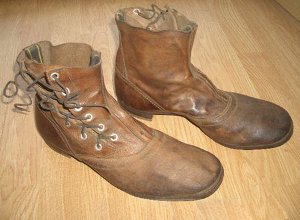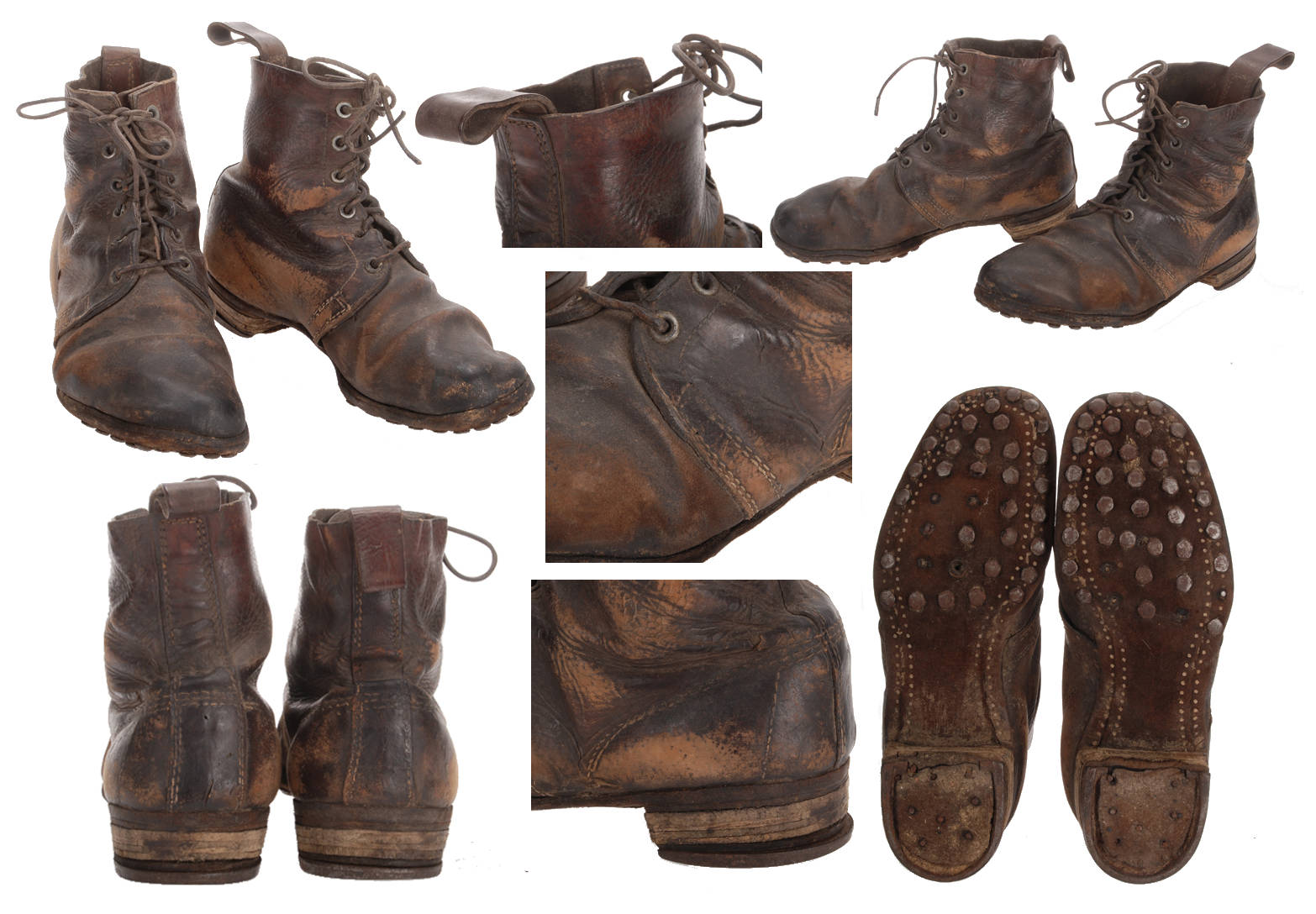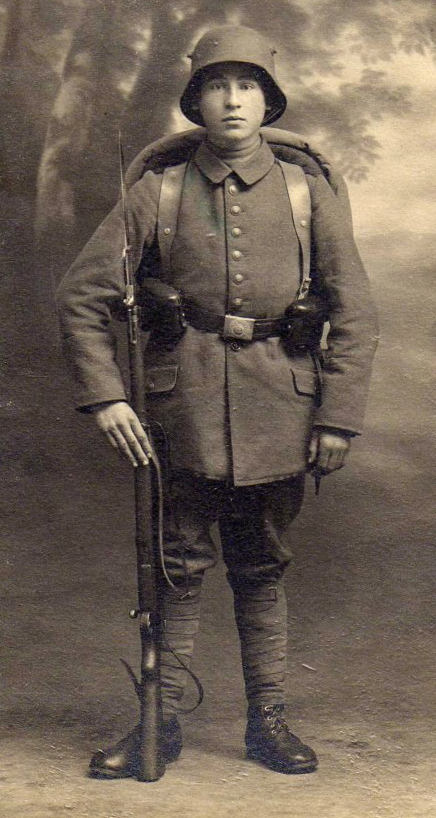Main Menu

M.1914 Schnurschuhe (Ankle Shoes)

The standard issue boot throughout the war for the German soldier was the M.1886 Marschstiefel. However, the boot prooved susceptable to rocks and mud entering through the open top of the boot in the trenches. Soldiers found that ankle boots with leg wraps prooved superior to keeping the inside of the boots free of debris. Germany imported most of its leather, which was severely restricted but the British due to their naval superiority. As leather became less available, the German army paid bounties to soldiers for providing their own boots, which more often than not were low boots. Later in the war the army had to accept low boots as the supply of leather just could not keep up with the demand for Marschstiefel.
The ankle boot at the start of the war was the M.1914 Schnurschuhe (pictured below). The previous model, the M.1901 (pictured at right), was a side-lace shoe, but that was changed in the M.1914 to a top lace, and by the 1917-18 period we reenact, most likely would not have been seen as boots rarely lasted more than 3 month at the front.
The M1914 Schnürschuhe should lace well up onto the ankle, and as on the Marschstiefel (Jackboots), they were supplied in their natural color, but after much wear, would darken. The soles were constructed of heavy leather and hobnailed.

Original pair of M.1914 Schnürschuhe.

Original photo of a Soldat in Schnürschuhe und Gamaschen..